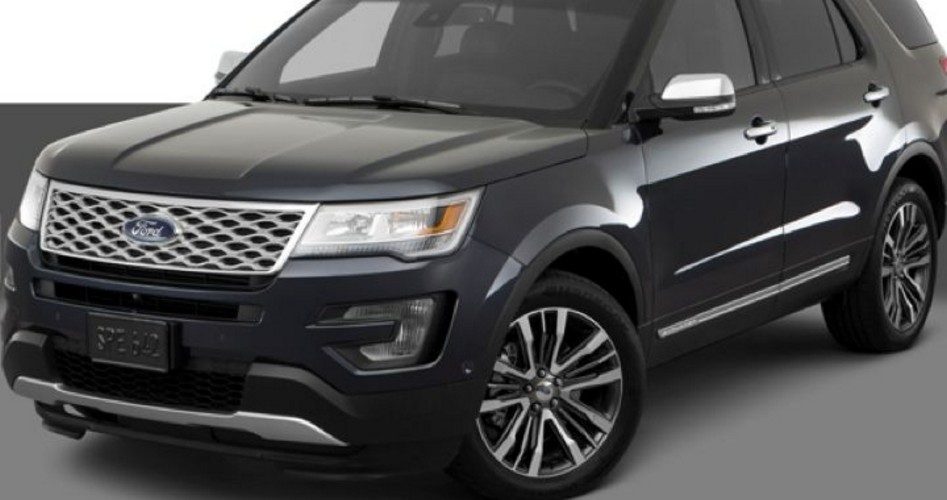
Ford said on Monday that it would join forces with software developer AutoFi, Inc. to allow customers the freedom to purchase a Ford or a Lincoln automobile and obtain financing for it online without forcing them to endure the usual three- to five-hour long sales pitch in one of its showrooms.
The software will allow shoppers to compare models, prices as delivered, available options, and choices of financing among different lenders. Once the sale and financing are completed, the customer stops by the dealership to pick up his car. Nice and easy.
AutoFi’s CEO Kevin Singerman said he really wasn’t trying to disrupt the sales process: “Our approach from the beginning was not to be, ‘We’re a Silicon Valley disrupter that’s come to take out the manufacturers and the dealers.’” But when fully implemented across the land, online buying may in fact all but end the “showroom sales” process that used to be the norm. It will replace “the legacy sales process where [dealers] price people rather than products,” as Ian Wittig noted at his DrivingSales.com blog. Currently, wrote Wittig, “Dealers insist [that] consumers visit the dealership and endure [that process]” resulting in “inefficiency [that] is undeniable.”
The momentum appears to be unstoppable: With the lowering of the cost of information thanks to the Internet, more information can be delivered online — slowly but surely taking the salesman out of the picture. On the same day as Ford’s announcement, Walmart said it would start selling cars inside 25 of its Supercenters starting in April. Calling it its CarSaver program, buyers can sit down at a kiosk, access cars for sale through AutoNation, arrange financing through Ally, and pick up the car either at the store or at a local dealership, depending on state law.
Costco has been doing the equivalent for years, selling more than 1,000 vehicles at each of its stores every year. Once completely rolled out by 2018, Walmart will have its CarSaver kiosks in every one of its 3,500 Supercenters, and expects to do at least as well as Costco. Initially there will be staffers available to show customers how the process works and an 800 number, as well, to answer questions during the buying process.
Tim Russi, Ally’s president of finance, explained rule one: It’s all about the customer:
We’re all collectively trying to find a better customer experience. CarSaver is really taking a lead in trying to create that through [this] buying program to try to provide comfort, transparency [and] fairness to the consumer. With the reach that Walmart has, this could be a very large-scale buying program.
The car dealers are going along with these programs, for several reasons. In states that require that customers come by the dealership to pick up the car, the dealerships can attempt to upsell various options and services, and bind a customer to a regular service or maintenance contract. It also keeps inventory turnover high, which reduces a dealer’s floorplanning interest costs.
But Tesla is going one full step further, and dealers are resisting. Tesla sells its cars directly online or through its own branded stores, much like Apple. One can visit one of Tesla’s “galleries,” look over various models, and take the time to learn about how electric vehicles work, where to charge them, how much insurance costs are affected, how to obtain the minimal service that is needed, and so on.
In Virginia Tesla is viewed as a threat despite it having but a single “gallery” in the entire state. The state’s 452 other-brand auto dealerships are resisting the inevitable now that Tesla wants to open a second one. And the dealers are trying to use the power of government to squash the competition. Virginia, like most states, doesn’t allow manufacters to sell directly to customers so that the manufacturers cannot underprice automobile franchises. The dealers have tried to use that law to keep Tesla from opening more galleries. However, the law holds an exception: If no dealer wants to sell the automaker’s product, the company can sell directly to the public. When Tesla built its first gallery, no auto dealers wanted to sell Teslas, but now 11 of them claim they do. A court rejected the dealers’ claims, accepting Tesla’s argument that said no dealers have the technical know-how to sell Teslas, and because of the manner in which Teslas are priced (Teslas are sold at a price set by the manufacterer), there is no room for dealers to make a profit.
Said Don Hall, head of the Virginia Automobile Dealers Association (VADA):
For the last 29 years I have fought as a gladiator to protect the rights of the Virginia auto dealers and their franchise system.
We are under attack. This system is under attack by the likes of Tesla and many others out there who believe the franchise system is a dinosaur and no longer works.
That’s not exactly correct. Obviously buyers are still buying cars the old way in Virginia, while Tesla’s sales are, at present, infinitesimally small by comparison. What’s under attack is the old inefficient way of delivering an automobile compared to the better, lower cost, more efficient way to do so. The advantages, as spelled out by Tesla’s Todd Maron, are telling:
Tesla goes where the customers are, rather than requiring them to go to where the cars are: the showroom usually placed some distance from the center of town. Tesla’s storefronts, by contrast, are placed inside shopping malls and city centers. And they’re small, comfortable, even intimate, according to Tesla.
Tesla’s stores are education centers, not sales offices. Electric vehicles are still relatively new technology, just as Apple products were new. Tesla is borrowing from Steve Jobs here.
There is no inventory to maintain and pay interest on. Tesla customers can order their own vehicles, customizing them with various options and colors. The downside is that there is no instant delivery: most customers have to wait months for them. Currently Tesla is estimating March delivery for models ordered today.
Tesla doesn’t do traditional advertising, letting its storefronts, word of mouth and media exposure do the job for them.
Storefronts are vastly cheaper than massive automobile showrooms staffed with hundreds of employees and vast parking lots filled with cars that have to be moved quickly to keep financing costs low.
The car-buying experience is changing, challenging the present business model, just as Uber and Lyft are challenging traditional taxi services, and just as Amazon is challenging the big-box retailers. The landscape continues to shift, as it always has and always will as long as the free market is allowed to pursue its never-ending quest to serve the consumer — the buyer with the money — ever more effectively and efficiently.
An Ivy League graduate and former investment advisor, Bob is a regular contributor to The New American magazine and blogs frequently at LightFromTheRight.com, primarily on economics and politics. He can be reached at [email protected].



